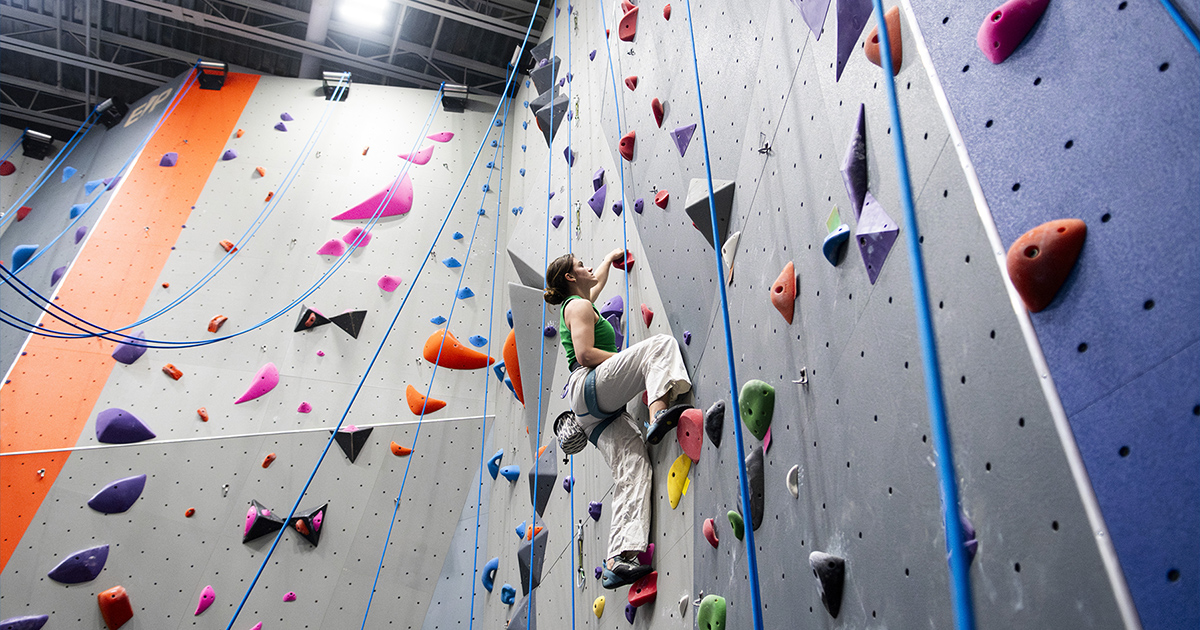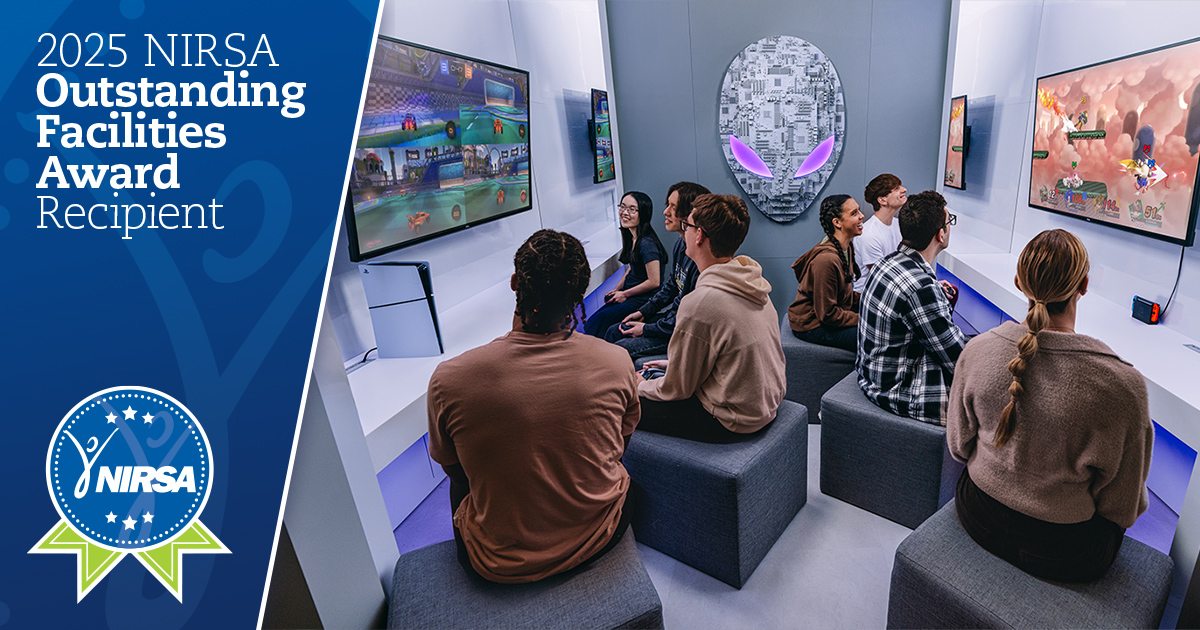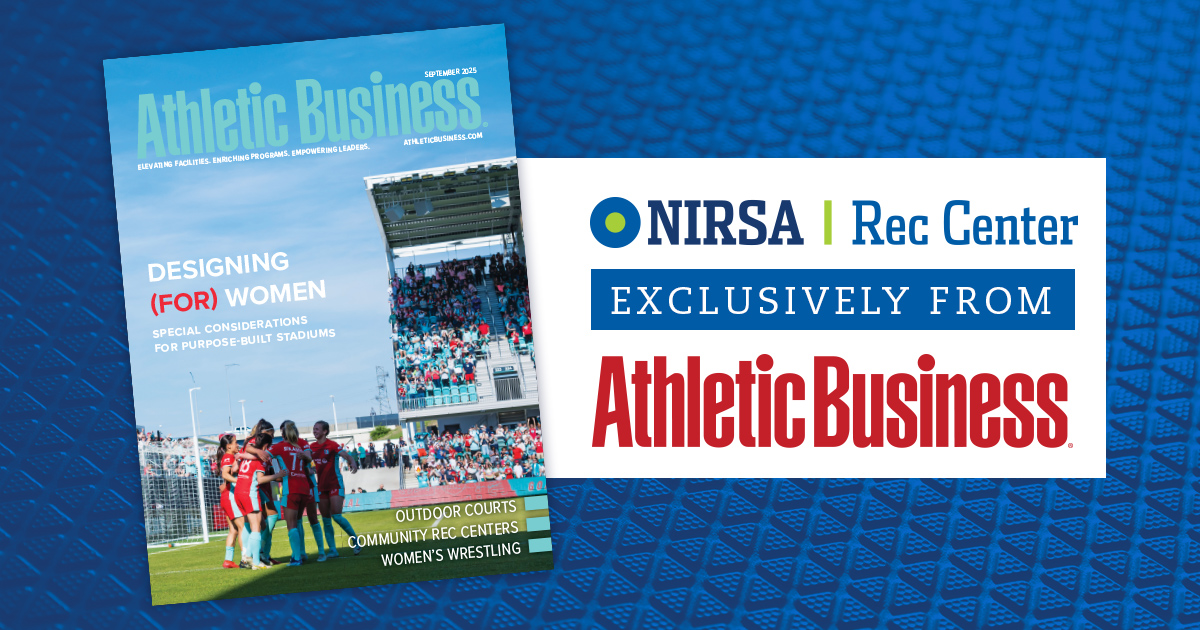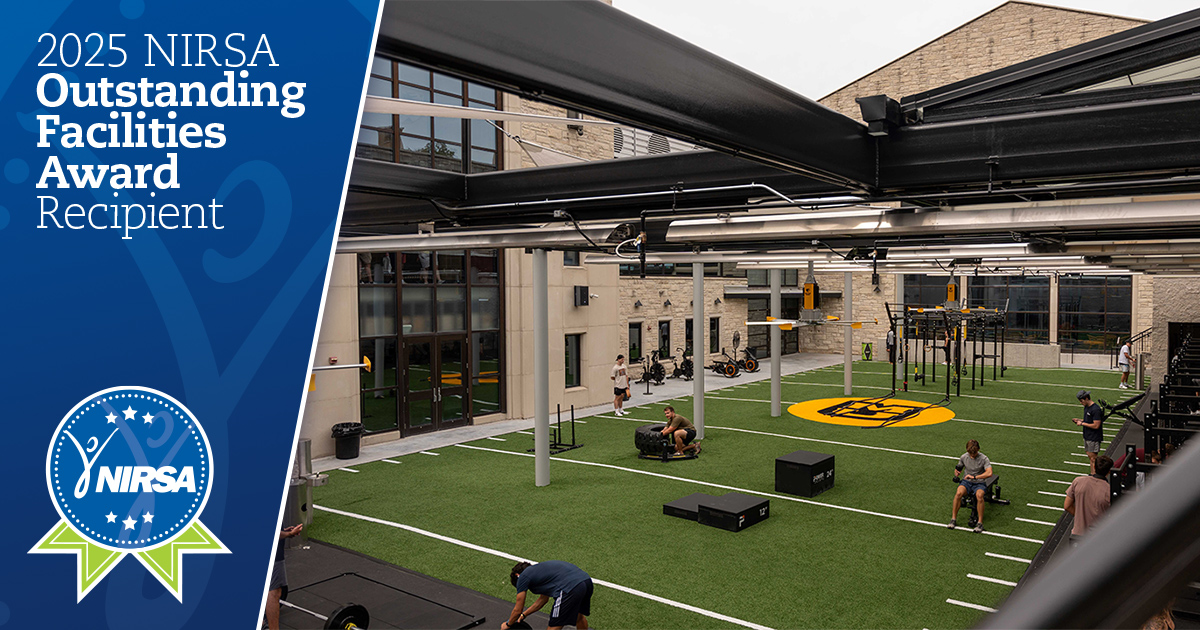As NIRSA members, we’re always in motion—and not just literally. In pursuing our vision to inspire healthy people and healthy communities, we’re constantly moving, changing, and re-shaping to keep up with the dynamic and diverse needs of today’s collegiate students.
At the University of Illinois at Urbana-Champaign, this way of life is essential as the Campus Recreation department strives daily to uphold its tagline: “A Place for Everyone.” When your campus “everyone” is made up of 42,000 someones, that’s no small goal. And when your statistics show 92% of those 42,000 are utilizing your facility, you might be tempted to take a breather. But for Robyn Deterding, Director of Illinois’ Campus Rec Department, and her team, this is the time to dig deeper. “We always look to see who we’re serving,” she explains, “so we wanted to know, who are the 8% not using campus rec?”
When you look at your rec center, do you see who’s not there?
Among others, U of I’s 8% were predominantly students of color, international students, and students with disabilities, including, in rising numbers, returning veterans.
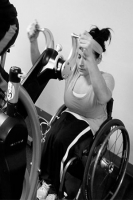
Although the Campus Recreation team at U of I knew it wanted to actively reach out to all of the groups that fell into that 8% category, they needed to focus their initial efforts on a specific subset of that underrepresented population. Past traditions and present needs combined to prioritize students with disabilities as the prime candidate for outreach.
University of Illinois has long pioneered disability rights; in 1948 it was the first post-secondary institution to provide a support service program enabling students with disabilities to attend, and, in 1949, it formed the nation’s first collegiate adapted sports and recreation program for students with disabilities.
With great legacy comes great responsibility; Illinois, currently engaged in a campus-wide “Inclusive Illinois” initiative, continues pioneering efforts to adapt facilities and structures so that all students may fulfill their academic and personal potential, regardless of physical ability.
Listen. Listen. Listen.
U of I’s Nugent Hall, which opened in Fall 2010, is a unique university housing option that offers students with severe disabilities, who need significant assistance with daily living, the chance to reside in a dorm fully integrated with able-bodied peers. The concept and execution were among the major contributors to the University of Illinois’ receipt of the 2012 Barrier-Free America Award. But Nugent Hall also offered something more—it provided a perfect point of outreach for Robyn and her Campus Rec team.
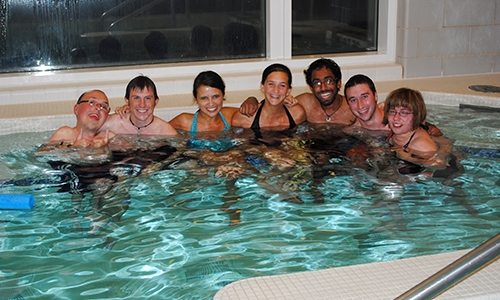
Tracy Kleparski, Assistant Director of Adaptive Recreation at Illinois, explains how U of I’s Campus Recreation department has been putting on events for the past two years specifically for students in Nugent Hall. On a monthly basis, the students who traditionally had been among the least likely to use the rec center, have had events—from power soccer to swimming to Ice Arena free-play—devoted completely to them. “They tell us what they want,” Tracy says, “and the rec team sets to work finding the resources—staff, finances, and accessibility tools—to make it happen.” Every step of the way, Tracy and Robyn cite listening to the students as a critical step that often gets left behind in planning new initiatives.
It’s the listening that makes all the difference—and, as Tracy and Robyn made clear, what you hear may surprise you. One of their rec facilities on campus has a leisure pool complete with a waterslide, volcano fountain, and decorative palm trees. The feature was intended as a fun attraction for students and community families. However, the employees in the Campus Rec department started noticing a large number of students with disabilities using the pool. With a water temperature set at 86 degrees, the department had stumbled into a perfect set up for physical therapy.
Finding the way to a new normal
Happy accidents like the leisure pool wasn’t always the norm though. As their team set about adjusting existing schedules to better accommodate their goals, they ran into a number of surprises along the way; one unexpected challenge they experienced as they introduced more students to the leisure pool involved service dogs consistently getting upset, and even sick, by the side of the pool. It turns out the animals, generally, are not trained for this type of environment and viewed their owners being in the pool as a danger. So, the Campus Rec team took this issue under wing too—they scheduled time for service dog training to take place right there in the facility. Everything, Tracy says, is in the service of making the rec facilities work for the campus as a whole. “We want to be the people who get the job done,” she says, “even if the work falls outside our normal roles.”
Or, one might add, if the definition of “normal” keeps expanding. When the ARC, Illinois’ 340,000 square foot main recreation facility, underwent a massive reconstruction in 2008, the Campus Rec department was very clear on one thing—being ADA compliant was simply not good enough. Those regulations are just starting points, says Tracy. “There’s this mindset that recreation is for the traditional able-bodied person, but you always need to look beyond what we usually see as our rec user and think more broadly…You need to ask if [your program or facility is] acceptable for everyone.” And who better to ask then the students they were trying to welcome?
For U of I and for NIRSA members, it’s not enough to simply say: Everyone is welcome! To say that everyone is welcome is easy; showing it takes hard work. “We had students come in and check the facility from the user’s stand point,” Tracy says. They made sure necessary items were at a functional height level; they negotiated wheelchairs and power chairs around workout machines and through doorways, letting the department know what was and wasn’t working for them.
 The University of Illinois’ commitment to serving its student body—holistically and inclusively—never stops evolving. This Veteran’s Day, Illinois is scheduled to break ground on their innovative Center for Wounded Veterans in Higher Education, providing transitional residential accommodations for 12 to 14 veterans at a time, and non-residential services for up to 150 veterans and their families. With approximately 250,000 of the more than two million veterans of wars in Afghanistan and Iraq returning home with severe and multiple disabilities, including traumatic brain injuries related to the extensive use of improvised explosive devices, the necessity and importance of such a center cannot be overstated.
The University of Illinois’ commitment to serving its student body—holistically and inclusively—never stops evolving. This Veteran’s Day, Illinois is scheduled to break ground on their innovative Center for Wounded Veterans in Higher Education, providing transitional residential accommodations for 12 to 14 veterans at a time, and non-residential services for up to 150 veterans and their families. With approximately 250,000 of the more than two million veterans of wars in Afghanistan and Iraq returning home with severe and multiple disabilities, including traumatic brain injuries related to the extensive use of improvised explosive devices, the necessity and importance of such a center cannot be overstated.
As cited in the February press release, the Center “will use a multidisciplinary, family-centric team approach” and “function as a locus of activity, identity, and affiliation for veterans and their families as they adjust to the complexities that disabilities can present.” It’s a large undertaking—but one that is being brought to light by a top down commitment, from Governor Pat Quinn to the students on campus.
To some, the Center might seem to have little relevancy to campus rec—luckily, the Illinois Campus Rec team is not among them. “This is not rec focused,” Robyn says. “It’s how do we bring vets to campus and working on that transition, making people aware of resources for counseling, finding housing, all before they come.” Campus Rec has already started building awareness and raising funds by sponsoring the Illini Vet 5k and actively partnering with the Veterans Affairs unit on campus. Robyn’s right—this type of work is not rec focused—it’s campus rec focused. So that when the first group of veterans arrives at this incredible Center they will benefit not only from Illinois’ storied history of disability services and the great innovations at Nugent Hall, but also the unwavering support of Campus Recreation.
Forging partnerships
Campus Rec at Illinois benefits from a funding model that is based in student fees, and, when they go before the student committee to explain how monies are being used, the students have consistently responded positively to their outreach efforts to underrepresented groups. In their eyes, everyone pays the fees; everyone should have access.
But, what is easy in theory, can sometimes present some struggles when it comes to putting it into practice. From the business standpoint, Tracy is the first to admit that at times it’s challenging to devote an entire gym to serving 15 people, when it could be serving 200. But, she says, even financially, “you have to look at the bigger picture.” Perhaps an inaugural event only serves 15 students with disabilities, but the goal is that it gains momentum, so that each time the event happens, more students will be more inclined to attend.
And, both Robyn and Tracy agree, it never hurts to get creative. Non-traditional funding sources, such as their campus’ Mom’s and Dad’s Association, were helpful in supporting projects, getting the word out, or even looking for outside financial grants.
Even better, Robyn says, is to use existing campus resources to the fullest by partnering with academics: “There’s a lot of research that needs to be done around underrepresented groups on campus, so reaching out to departments like Kinesiology, Community Health, or Recreation and Tourism and expressing interest in being a part of their research is mutually beneficial—they get an easily accessible sample and, if you’re in on the front end, you can get many costs that are incurred covered.” When the U of I Campus Recreation team decided to reach out to the individuals and groups who constituted their 8%, they recognized that these bridges, like any relationship, wouldn’t be built overnight. But, they were determined: if the students weren’t coming to them, they would go to the students. They were grass-roots in their approach, putting Campus Recreation staff members on every advisory board within Student Affairs. They toured the various cultural houses and centers on the U of I campus, attending meetings and getting to know the students on their turf. They continue to volunteer their time with student-driven programs, such as the English conversant program, in order to get to know and understand a type of student experience that might otherwise be overlooked. “Don’t be afraid to pursue things outside your facility walls,” Robyn advises.
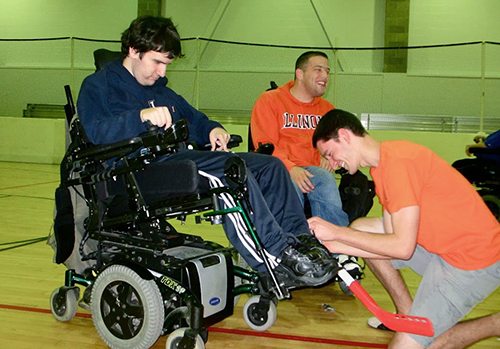
Seeing the bigger picture
It might seem counterintuitive to hear a Director of Campus Recreation discuss some of her department’s resource spending by saying, “this is not rec focused,” but it’s a big part of the attitude that has been working so well for Illinois. “We give what we can,” Robyn says. Sometimes this means devoting time and staff to other campus initiatives aimed at helping students feel comfortable throughout their time on campus. For example, the campus’ Latina/Latino Family Visit Day overtakes the ARC every October, meeting a huge student need. Robyn explains that their research showed that Latino families were frequently not attending traditional orientation sessions on campus—due to barriers of language or logistics. For these, often first-generation, college students, it was a huge detriment to be in a place their family had no knowledge of or connection to. So the decision to host a Spanish-language, family-friendly day, on a weekend, was taken and the campus has been the better for it.
And its use of the ARC like this isn’t that unusual; as one of the biggest spaces on the Urbana-Champaign campus, this flexible facility lends itself to everything from a space for cooking classes to a place for study groups and guest speakers.
In trying to truly become “a place for everyone”, Robyn and Tracy reiterate that there are “multiple ways people can use campus rec.” They will also be the first to admit that outreach to underrepresented groups takes years; it’s a long road, in part because groups that have been overlooked in the past are weary of new comers showing up and claiming they want to help, but, it can—and has—paid off. “Don’t give up; don’t take no for an answer,” Robyn says. It’s that mindset, which tries to always envision a bigger picture, looking at campus wellness beyond just traditional recreation, that makes the University of Illinois’ goal achievable for all.
- If you are interested in highlighting your campus or a NIRSA member’s achievements on your campus, pitch us your ideas.
Erin O'Sullivan is currently the Senior Director of Initiatives and Impact at NIRSA.




